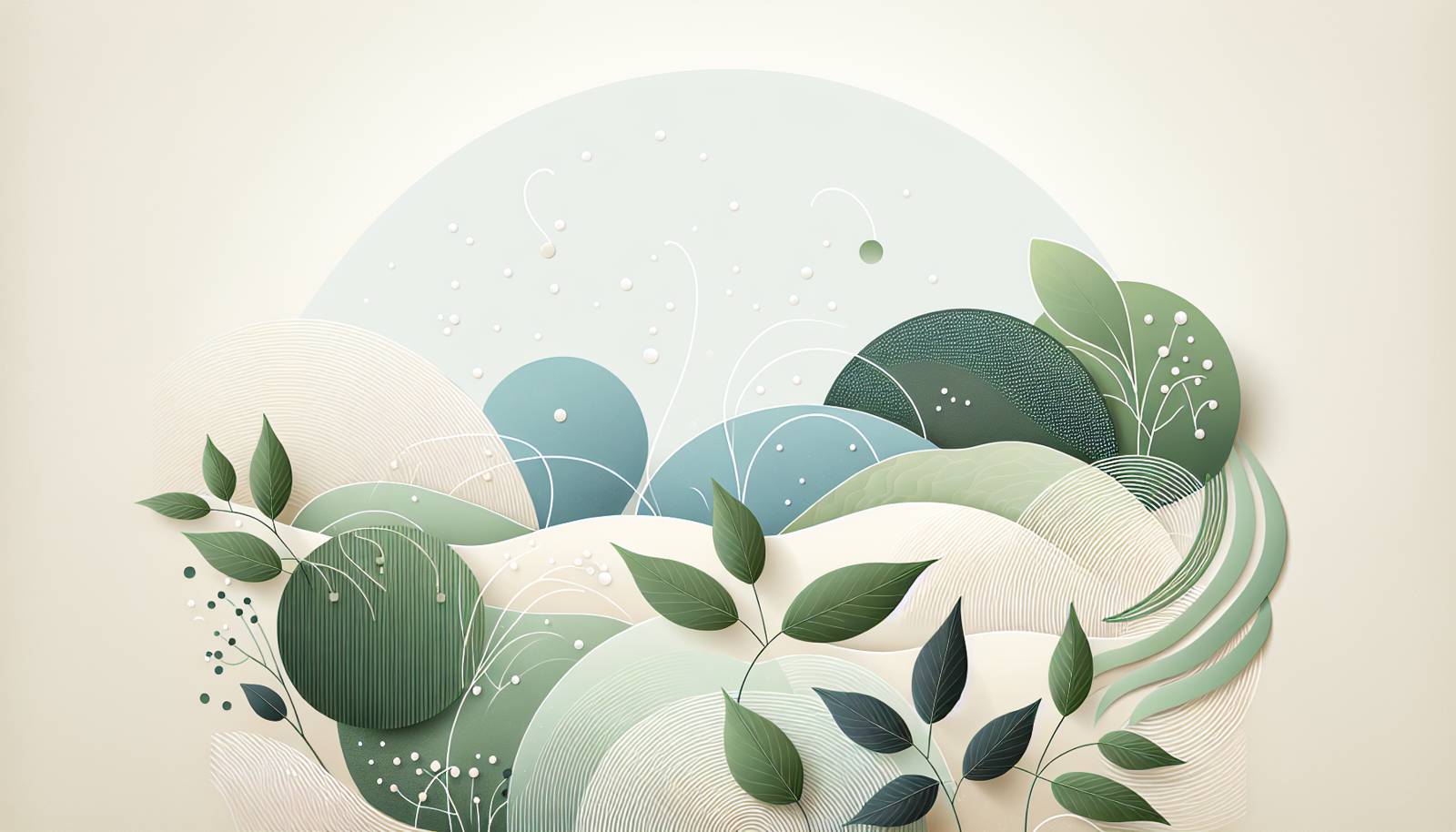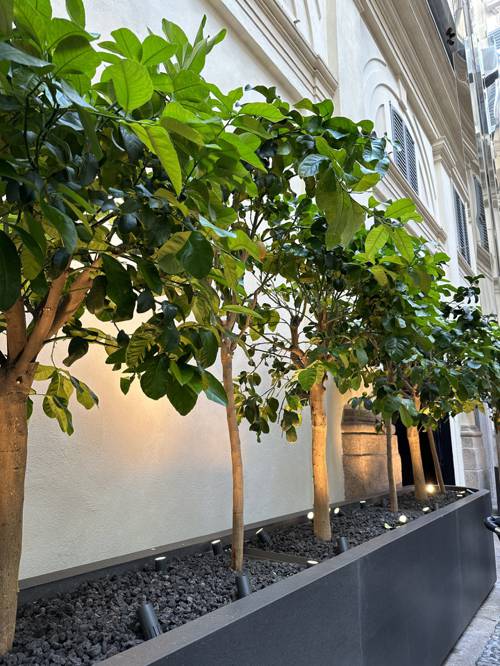
FAQ About Indoor Plant Moisture Control Technologies

What are indoor plant moisture control technologies?
Indoor plant moisture control technologies encompass various tools and systems that help maintain optimal moisture levels for indoor plants. This includes moisture sensors, automatic watering systems, and moisture-retentive materials that ensure plants receive the proper hydration without overwatering or dehydration.

How do moisture sensors for indoor plants work?
Moisture sensors work by measuring the volumetric water content in the soil. They often consist of two probes that are inserted into the soil, and measure the moisture level via electrical resistance, capacitance, or another physical property. When connected to a digital display or an app, these sensors can inform you of when your plant needs water, helping prevent under or overwatering.

What are the benefits of using moisture sensors for houseplants?
Moisture sensors provide precise data on the hydration needs of your plants, helping to prevent both overwatering—which can cause root rot—and underwatering, which can lead to wilting. This technology aids in maintaining the health and longevity of indoor plants by allowing plant owners to water only when necessary.

Can I automate watering using moisture control technologies?
Yes, automation is possible using smart irrigation systems that are integrated with moisture sensors. These systems can automatically adjust the watering schedule based on real-time soil moisture data, ensuring plants receive the right amount of water even when you are not around to manually water them.

What are moisture-retentive materials, and how are they used for indoor plants?
Moisture-retentive materials are substances that help retain water in the soil, reducing the frequency of watering needed. These can include materials like sphagnum moss, vermiculite, or water-retentive hydrogels. By incorporating these materials into the potting mix, they help maintain consistent moisture levels, which is particularly useful in dry or hot climates.

How do automatic watering systems benefit indoor plants?
Automatic watering systems provide consistent hydration, reduce the risk of overwatering, and can save time and effort for plant owners. These systems can be especially beneficial for people with busy schedules or those who travel frequently, as they ensure that plants are watered adequately in their absence.

Are there affordable moisture control technologies available for home gardeners?
Yes, there are many affordable solutions on the market, ranging from simple moisture meters to more sophisticated smart systems with connectivity features. Basic moisture meters can be purchased for a reasonable price and can effectively help you monitor the soil’s water level.

What are smart irrigation systems, and how do they relate to indoor plants?
Smart irrigation systems use technology such as sensors and IoT connectivity to automate the watering process for indoor plants. These systems can be programmed to provide water based on the specific needs of each plant, as determined by soil moisture levels, environmental conditions, and plant type.

How do you install a moisture sensor in a plant pot?
To install a moisture sensor, you should first remove the top layer of soil, then insert the sensor's probes into the soil at the root level, ensuring the probes are adequately covered by soil. It’s crucial to follow the manufacturer’s instructions for optimal placement, which typically involves avoiding making contact with the wall of the pot for accurate readings.

Do indoor plant moisture control technologies require maintenance?
Yes, regular maintenance may be necessary to ensure these technologies function properly. For instance, sensors might need regular cleaning to prevent soil or calcium buildup, and batteries or power sources may need periodic replacement or recharging. Automated systems might also need software updates if they are linked to smart devices.

What role do hydrogels play in moisture control for potted plants?
Hydrogels are water-absorbing polymers that can hold substantial amounts of water and release it slowly into the soil. Incorporating hydrogels into the soil mix helps maintain a stable moisture level, reducing the frequency of watering, which can be especially beneficial in maintaining plant hydration during periods of neglect.

Can moisture control systems be used with all types of indoor plants?
Yes, moisture control systems can generally be used with all types of indoor plants, though the settings or method might need adjustment according to the specific moisture requirements of different plants. Some plants require more moisture than others, so individual calibration may be necessary for optimal results.

What are the common mistakes when using moisture control technologies for indoor plants?
Common mistakes include incorrect sensor placement, not calibrating sensors properly, over-dependence on technology by ignoring visual plant health indicators, and using inappropriate settings for specific plant needs. Ensuring proper installation and regular checks can help mitigate these issues.

How can moisture control improve plant health and growth?
Proper moisture control enhances plant health by ensuring that plants are not overwatered or underwatered. Consistent moisture levels support healthy root systems and nutrient uptake, leading to better growth and overall plant vitality.

What is the typical cost range for indoor plant moisture sensors?
The cost of indoor plant moisture sensors can vary widely based on complexity and features, ranging from as low as $10 for basic meters to $100 or more for advanced models with smart capabilities. It’s important to choose a sensor that fits both your budget and requirements.

Are there any DIY solutions for moisture control in indoor plants?
Yes, some DIY solutions include creating self-watering pots using absorbent wicks, or simplifying moisture monitoring by using inexpensive dowels or sticks to check soil moisture manually. Additionally, mixing homemade water-retentive soil by adding absorbents like peat or coco coir can enhance moisture retention.

Can I integrate weather data with indoor plant watering systems?
While primarily used for outdoor applications, integrating weather data can be beneficial for indoor environments exposed to outdoor conditions (like greenhouses or solariums). Some smart systems allow integration with weather apps to adjust watering schedules accordingly, although for strictly indoor plants, this is less relevant.

What types of indoor environments benefit most from moisture control systems?
Moisture control systems are particularly beneficial in environments where maintaining consistent humidity and moisture levels is challenging, such as homes with central heating, air conditioning, or lower ambient humidity. They are also useful in greenhouses and offices that house numerous plants.

How do I troubleshoot a non-functioning moisture sensor?
If a moisture sensor is not functioning, check for power supply issues, such as dead batteries or improper connection. Clean the sensor probes to remove any dirt or minerals, and ensure they're inserted properly in the soil. If problems persist, consult the product's user manual or customer support for further assistance.
